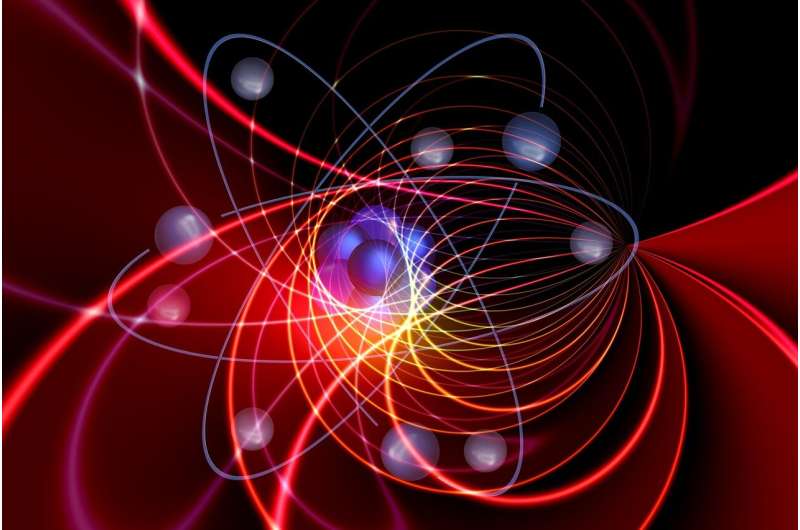Quantum battles in attoscience: Following three debates

In July 2020, 300 researchers from 34 different countries attended the CECAM virtual workshop, 'Quantum Battles in Attoscience'. EPJ D presents three community papers which emerged from the in-depth panel discussions held at this occasion.
The field of attoscience has been kickstarted by new advances in laser technology. Research began with studies of three particular processes. Firstly, 'above-threshold ionization' (ATI), describing atoms which are ionized by more than the required number of photons. Secondly, 'high harmonic generation' (HHG) occurs when a target is illuminated by an intense laser pulse, causing it to emit high-frequency harmonics as a nonlinear response. Finally, 'laser-induced nonsequential double ionization' (NSDI) occurs when the laser field induces correlated dynamics within systems of multiple electrons.
Using powerful, ultrashort laser pulses, researchers can now study how these processes unfold on timescales of just 10-18 seconds. This gives opportunities to study phenomena such as the motions of electrons within atoms, the dynamics of charges within molecules, and oscillations of electric fields within laser pulses.
Today, many theoretical approaches are used to study attosecond physics. Within this landscape, two broadly opposing viewpoints have emerged: the 'analytical' approach, in which systems are studied using suitable approximations of physical processes; and the 'ab-initio' approach, where systems are broken down into their elemental parts, then analyzed using fundamental physics.
Using ATI, HHG, and NSDI as case studies, the first of the Quantum Battles papers explores this tension through a dialog between two hypothetical theorists, each representing viewpoints expressed by the workshop's discussion panel. The study investigates three main questions: relating to the scope and nature of both approaches, their relative advantages and disadvantages, and their complementary roles in scientific discovery so far.
Another source of tension within the attoscience community relates to quantum tunneling—describing how quantum particles can travel directly through energy barriers. Here, a long-standing debate exists over whether tunneling occurs instantaneously, or if it requires some time; and if so, how much.
The second paper follows this debate through analysis of the panel's viewpoints, as they discussed the physical observables of tunneling experiments; theoretical approaches to assessing tunneling time; and the nature of tunneling itself. The study aims to explain why so many approaches reach differing conclusions, given the lack of any universally-agreed definition of tunneling.
The wave-like properties of matter are a further key concept in quantum mechanics. On attosecond timescales, intense laser fields can be used to exploit interference between matter waves of electrons. This allows researchers to create images with sub-atomic resolutions, while maintaining the ability to capture dynamics occurring on ultra-short timescales.
The final 'battle' paper explores several questions which are rarely asked about this technique. In particular, it explores the physical differences between the roles of matter waves in HHG—which can be used to extend imaging capabilities; and ATI—which is used to generate packets of electron matter waves.
The Quantum Battles workshop oversaw a wide variety of lively, highly interactive debates between a diverse range of participants: from leading researchers, to those just starting out in their careers. In many cases, the discussions clarified the points of tension that exist within the attoscience community. This format was seen as particularly innovative by the community and the general public, who could follow the discussions via dedicated social media platforms. One participant even referred to the Quantum Battles as a `breath of fresh air'.
Quantum Battles promoted the view that while initial discoveries may stem from a specific perspective, scientific progress happens when representatives of many different viewpoints collaborate with each other. One immediate outcome is the "AttoFridays" online seminar series, which arose from the success of the workshop. With their fresh and open approach, Quantum Battles and AttoFridays will lead to more efficient and constructive discussions across institutional, scientific, and national borders.
More information: Gregory S. J. Armstrong et al, Dialogue on analytical and ab initio methods in attoscience, The European Physical Journal D (2021). DOI: 10.1140/epjd/s10053-021-00207-3
Cornelia Hofmann et al, Quantum battles in attoscience: tunnelling, The European Physical Journal D (2021). DOI: 10.1140/epjd/s10053-021-00224-2
Kasra Amini et al, Quantum interference and imaging using intense laser fields, The European Physical Journal D (2021). DOI: 10.1140/epjd/s10053-021-00269-3
Journal information: European Physical Journal D
Provided by Springer



















